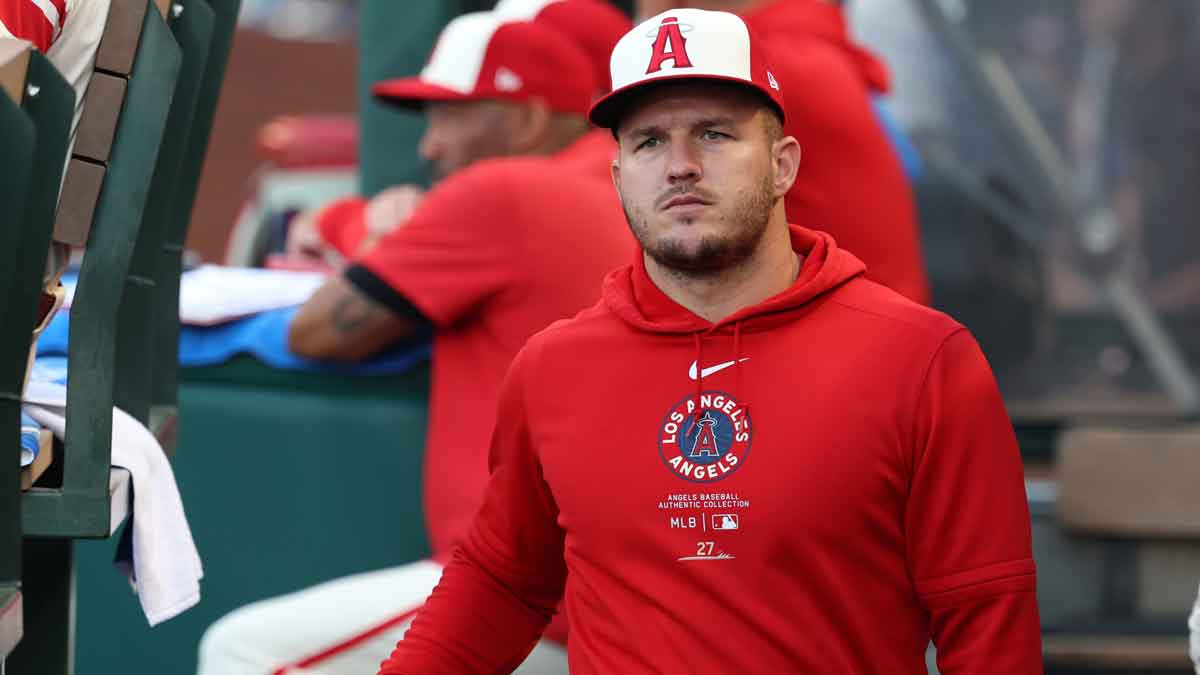
The Philadelphia Phillies had an impressive regular season, finishing with a 95-67 record to clinch the NL East title. This secured them a first-round bye in the postseason and home-field advantage against the New York Mets in the Division Series.
However, the Phillies fell short, losing the series 3-1 to the Mets. Once again, a strong regular season ended in postseason disappointment. One glaring issue for the Phillies is their need for a solution in center field, and there’s one name that stands out: Mike Trout.
The Phillies have several areas where they could improve, especially in the outfield. Nick Castellanos hasn’t lived up to his contract, Kyle Schwarber is primarily a DH, Brandon Marsh has struggled with consistency, and Johan Rojas hasn’t delivered. Adding at least one new starter to the mix could make a big difference. While Max Kepler was signed on a one-year deal, center field remains a pressing concern.
Here’s where things get intriguing: what if Phillies president of baseball operations David Dombrowski and his team reached out to the Los Angeles Angels about Trout’s availability? While Trout comes with a hefty salary and is under contract for several years, this move could potentially benefit both teams. Let’s explore the trade scenario from the perspectives of both the Angels and the Phillies.
Mike Trout homecoming could be big win for Phillies
Picture Trout patrolling center field regularly—Phillies attendance records would almost certainly shatter. Fans would swarm Citizens Bank Park to welcome back their beloved “hometown” star. Trout’s passion for Philadelphia sports, especially the Eagles, is no secret. Born in nearby New Jersey and spending his offseasons at home, Trout is already a familiar face at major Philly sporting events. A trade to the Phillies would likely make those appearances even more frequent.
Yes, the contract is hefty. With six years remaining and nearly $223 million owed, it’s a significant commitment, particularly for a team with other needs. However, filling the outfield void with a player of Trout’s caliber could be a game-changer. Pairing him with Marsh and other outfielders for depth would strengthen the team while addressing a key roster hole.
The bigger question is: what would a trade look like? Dave Dombrowski and the Phillies would likely need to part with a top prospect or two, along with a young major leaguer, as a starting point. The Angels, on the other hand, must focus on upgrading multiple positions—most notably in the outfield, third base, and the starting rotation. Could GM Perry Minasian find the pieces he needs from Philadelphia to make this blockbuster happen?
Angels could form potential future core in Trout trade

Let’s take a look at who the Angels might target, with urgency being key. Aidan Miller and Andrew Painter are likely off-limits for a deal like this, for several reasons. However, the Angels should inquire about outfielder Justin Crawford and starting pitcher Mick Abel, who is on the verge of making it to the majors. While Abel’s skill set might eventually suit a bullpen role, the Angels would be wise to explore his potential as a long-term starting pitcher.
Other near-MLB-ready arms include right-handers Jean Cabrera, Seth Johnson, Michael Mercado, and Griff McGarry. However, if Los Angeles can land both Crawford and Abel from the Phillies while shedding the entirety of Mike Trout’s contract, it would be a major win for GM Perry Minasian and his staff.
Here’s what a potential trade could look like:
Phillies acquire: OF Mike Trout (from LAA)
Angels acquire: OF Justin Crawford (No. 3 PHI prospect per MLB.com), SP Mick Abel (No. 4 PHI prospect)
This trade would be a win for both sides. Crawford has quickly developed into an impact prospect since being drafted in the first round, and Abel could immediately contribute to the Angels’ pitching staff. Adding an additional arm like Cabrera or Johnson would elevate the return package even further. Meanwhile, the Phillies would gain another superstar to bolster their roster. This deal could dramatically shift the power dynamic in both the National League and MLB overall. Would both teams make the move? There’s only one way to find out.



Be the first to comment